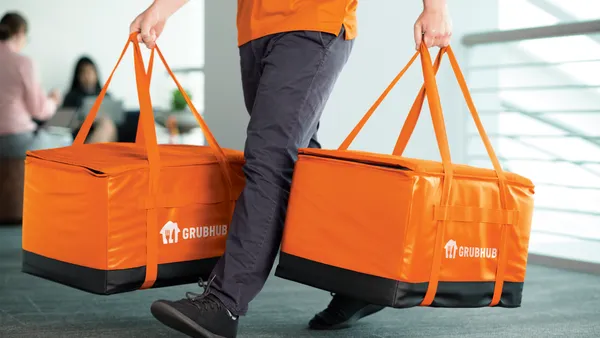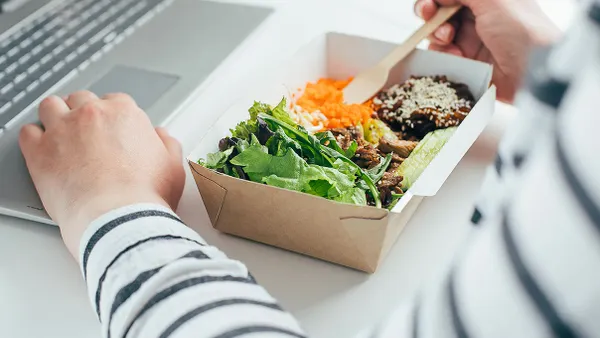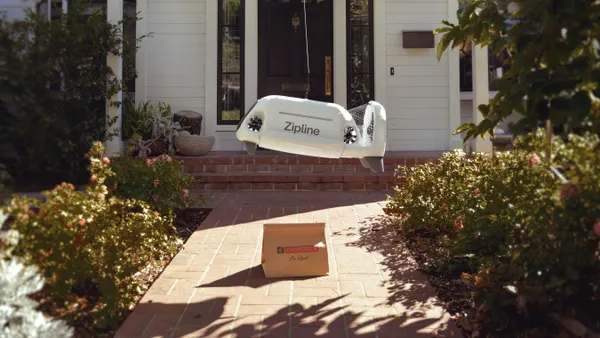Restaurants today are seeking to take back control of their delivery experiences from third parties. They are looking for solutions that help to save unwanted external fees, retain their customer data, and provide their customers with a better brand experience. With the right technology in place, restaurants can improve the quality of the entire delivery process end-to-end while saving on commissions and labor-intensive management of several external parties.
Growth with digital storefronts and the delivery boom
Inflation, supply chain disruption, labor shortage, and a general turbulent economic climate all affect the restaurant industry today. In times of uncertainty, leading restaurant brands shifted their focus on the digital storefront, as it generates an ever-growing revenue stream and ensures greater business adaptability. These digitalization trends came together with the growing customer demand for delivery, as nearly half of consumers (45%) say they are now dependent on food delivery. Forty percent of Americans order delivery at least once a month, while 13% order between two and six times a week.
During the last 2 years of pandemic restrictions and delivery boom, many restaurant brands were forced to adopt third-party delivery marketplaces as their primary delivery service approach. This has resulted in the loss of profit margins and loss of control of the customer data and experience.
Customers have also expressed their pain points related to poor delivery service, such as incorrect, late, or missing food delivery items. Delivery errors pose risks to reputation as it is common to attribute bad delivery service to the restaurant and not the third-party delivery marketplace. Such errors cause revenue loss for restaurants as consumers request a refund for inaccurate orders, stop interacting with the brand entirely or leave negative reviews online. When restaurants rely on third-party delivery services, they are not able to correct their performance and reputation because they have little to no control of their delivery service and no direct customer connection.

Taking back control with their own delivery operations and technology
With the rising demand for delivery and the importance of ensuring a great customer experience, many leading restaurant brands recently have expressed the aim to get their customers back into their native channels. Brands like McDonald’s want to have a better grip on delivery, expanding their McDelivery, a native delivery service directly from the native app. It has never been more important for restaurants to ensure efficient, profitable, and customer-centric delivery operations that bring more loyalty, additional revenue streams, and positive feedback, while strengthening the overall brand and business value.
The good news is that there are restaurant delivery & dispatch technology solutions that precisely deliver that. MENU Dispatch offers a platform that enables delivery order management from any internal or external channel and order (auto)assignment, tracking, and dispatching. With MENU Dispatch, restaurants can monitor fleet performance and optimize delivery routes, they can get a direct connection to their delivery customers, track and fulfill delivery orders and optimize their delivery operations for maximum efficiency.
These are the main benefits of MENU Delivery & Dispatch:
- Quality of service and improved customer experience. Restaurants can control the quality of their delivery service for their customers and provide positive feedback. They can track orders and have visibility of the entire fulfillment journey.
- Direct customer connection and customer data. Restaurants are able to establish and retain a direct connection to their delivery customers to reward and incentivize them with personalized offers instead of customers left invisible to the brand.
- Improved operations and reduced staff workload. Restaurants ensure seamless end-to-end delivery operations and ease their staff workload with auto-assignment from one single backend.
- Delivery data & reports. Restaurants have access to delivery reporting and forecasting to ensure staff availability, inventory, and other operational adjustments.
How MENU works
MENU helps restaurant brands avoid high third-party party commission fees and allows direct and efficient communications with their customers at all delivery fulfillment stages, from alerting them to their order status to sharing news and offering promotions or rewards. With MENU it has never been easier to track and manage restaurants’ own or external fleets through performance analytics. Restaurant drives can easily be onboarded while using the driver app for route optimization, while simultaneously interacting with customers anonymized by the system.
The main features of MENU Dispatch are:
-
Ability to choose own dispatching approach through restaurants’ own drivers, delivery service providers (DSPs) or both. The system can automatically select the best matching DSP based on cost or speed factors, as these are prioritized in the settings.
- “Promise” feature before delivery order is accepted in the system. It verifies what concept-owned or third-party drivers are available and provides accurate expected delivery times.
-
Automatic assignment of orders for dispatching based on an intelligent algorithm. Delivery orders are automatically assigned to the most suitable driver from the restaurant’s own fleet or a DSP.
-
Enabling and disabling the DSPs according to the business need and performance analysis. Easily add new DSPs as delivery partners as soon as they become available, in restaurants’ regions, with no additional effort. All the integrations are done already by MENU.
-
Management and optimize your driver fleet with ease. With a built-in driver app, restaurants are fully in charge of delivery order fulfillment and actual delivery time thanks to real-time delivery tracking and automated route planning even for multiple deliveries.
The value of delivery data and reporting with MENU
With MENU delivery data, restaurants can understand their customers better, including the peak delivery hours and items that allow for improved planning of staff, supply, and logistics. This gives your brand a competitive advantage, as well as offers overall business flexibility while meeting ever-changing customer needs.
Here is an example of the most common features of MENU Dispatch for effective delivery data analysis:
- Heat maps highlight the zones that are generating the most orders and helps understand the need for DSPs or native fleet to cover the demand. They can also signal potential store opening areas for business growth.
- The order cost statistics for ticket sizes allow calculation of margins and sales that contribute to overall business analysis.
- Driver-based statistics show deliveries per hour and return to restaurant avg. time to optimize delivery routes and driver performance.
- DSPs statistics allows the comparison of different DSPs to measure their speed, customer feedback, and service costs.
- Rejection rate report for DSPs helps to understand the responsiveness of third-party delivery drivers and to look for alternatives if needed.
- External channel reports can be generated in some cases if restaurants use an external channel connector - MENU Link. This allows connection of all external ordering channels, such as Google, social & conversational apps, and delivery marketplaces. The external channel report, paired with the data generated by MENU Dispatch, can provide comparative statistics on how external channels are performing when compared to native ordering channels such as restaurant-branded web and mobile applications.
Time to take back control over your delivery experience
Restaurant customers are looking for easy, personalized, and enjoyable online ordering and delivery experiences. Restaurants seek technology that helps them with automating and streamlining this task so that their fresh and delicious food can be served to customers via direct and controlled experience and the way their customers want it. With MENU Dispatch and MENU Link technology in place, restaurants can connect to their delivery ordering customers and manage their delivery operations end-to-end, while saving on expensive third-party fees.
About MENU Technologies
Acquired in July 2022 by PAR Technologies Corporation, MENU Technologies is a market-leading ecommerce platform for global restaurant brands, powering all digital customer touchpoints from mobile, web, kiosk to delivery marketplaces. MENU enables omnichannel flow and centralized management of all ecommerce data and customer engagement. Restaurant information, news and menus for all sales channels can be updated from one central place. MENU merges all commercial data coming from all customer touchpoints such direct channels (web, mobile, kiosk) and third-party delivery marketplaces, Google & social media to one central data hub synced with restaurant POS (Point of Sale).
To learn more about MENU, visit https://menu.app










